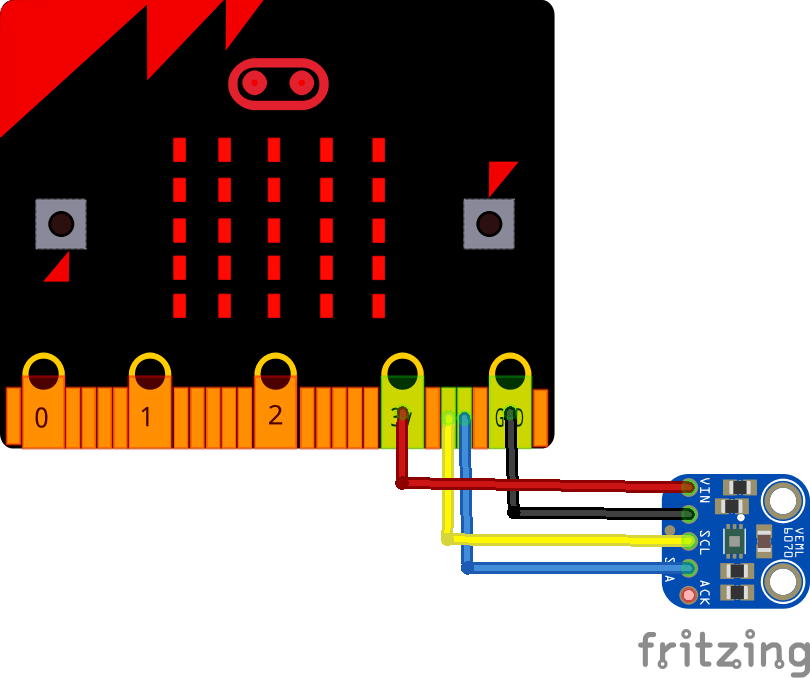VEML6070 is an advanced ultraviolet (UV) light sensor with I2C protocol interface and designed by the CMOS process. It is easily operated via a simple I2C command. The active acknowledge (ACK) feature with threshold windows setting allows the UV sensor to send out a UVI alert message.
Under a strong solar UVI condition, the smart ACK signal can be easily implemented by the software programming.
VEML6070 incorporates a photodiode, amplifiers, and analog / digital circuits into a single chip. VEML6070’s adoption of FiltronTM UV technology provides the best spectral sensitivity to cover UV spectrum sensing. It has an
excellent temperature compensation and a robust refresh rate setting that does not use an external RC low pass filter.
VEML6070 has linear sensitivity to solar UV light and is easily adjusted by an external resistor. Software shutdown mode is provided, which reduces power consumption to be less than 1 μA. VEML6070’s operating voltage ranges from 2.7 V to 5.5 V.
Shopping List
| Amount | Part Type | |
|---|---|---|
| 1 | VEML6070 | |
| 1 | BBC micro:bit bulk micro-controller with motion detection, compass, LED display and Bluetooth |
Schematics/Layout

microbit and VEML6070
Code
No libraries in this example
[codesyntax lang=”cpp”]
#include <Wire.h>
// VEML6070 I2C address is 0x38(56)
#define Addr 0x38
void setup()
{
// Initialise I2C communication as MASTER
Wire.begin();
// Initialise serial communication, set baud rate = 9600
Serial.begin(9600);
// Start I2C Transmission
Wire.beginTransmission(Addr);
// Select command register
// Integration time = 0.5T, shutdown mode disable
Wire.write(0x02);
// Stop I2C Transmission
Wire.endTransmission();
delay(300);
}
void loop()
{
unsigned int data[2];
// Start I2C Transmission
Wire.beginTransmission(Addr);
// Select data msb register
Wire.write(0x73);
// Stop I2C Transmission
Wire.endTransmission();
// Request 1 byte of data
Wire.requestFrom(Addr, 1);
// Read 1 byte of data
if(Wire.available() == 1)
{
data[0] = Wire.read();
}
// Start I2C Transmission
Wire.beginTransmission(Addr);
// Select data register
Wire.write(0x71);
// Stop I2C Transmission
Wire.endTransmission();
// Request 1 byte of data
Wire.requestFrom(Addr, 1);
// Read 1 byte of data
if(Wire.available() == 1)
{
data[1] = Wire.read();
}
// Convert the data
float uvlight = data[0] * 256.0 + data[1];
// Output data to serial monitor
Serial.print("UV Light Of The Device");
Serial.println(uvlight);
delay(1000);
}
[/codesyntax]
Output
Open the serial monitor – this is what I saw. I was indoors at the time
UV Light Of The Device0.00
UV Light Of The Device0.00
UV Light Of The Device0.00
UV Light Of The Device0.00
UV Light Of The Device0.00
UV Light Of The Device0.00
Links
https://www.vishay.com/docs/84277/veml6070.pdf
VEML6070 UV Sensitivity Detection Sensor for Arduino

